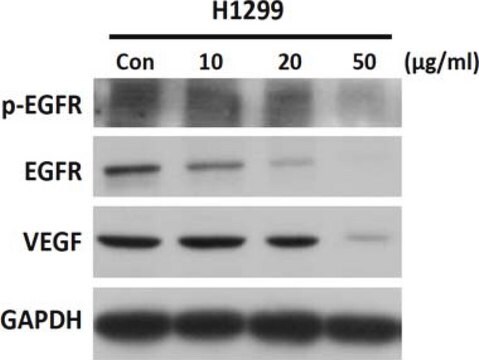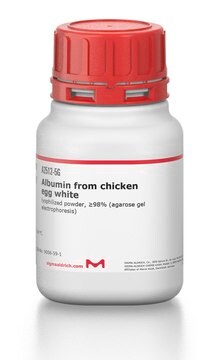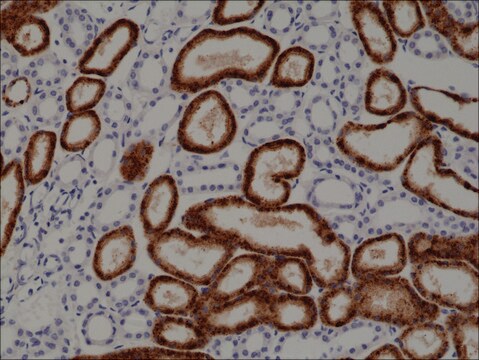MABF238-I
Anti-CD38 Antibody, clone 2H3-2
About This Item
Productos recomendados
biological source
mouse
Quality Level
conjugate
unconjugated
antibody form
purified antibody
antibody product type
primary antibodies
clone
2H3-2, monoclonal
mol wt
calculated mol wt 34.33 kDa
species reactivity
human
packaging
antibody small pack of 100 μg
technique(s)
flow cytometry: suitable
isotype
IgMκ
epitope sequence
Extracellular domain
Protein ID accession no.
UniProt accession no.
shipped in
ambient
target post-translational modification
unmodified
Gene Information
human ... CD38(952)
General description
Specificity
Immunogen
Application
Evaluated by Flow Cytometry in Raji cells.
Flow Cytometry Analysis: 1 μg of this antibody detected CD38 in one million Raji cells.
Physical form
Storage and Stability
Other Notes
Disclaimer
¿No encuentra el producto adecuado?
Pruebe nuestro Herramienta de selección de productos.
Storage Class
12 - Non Combustible Liquids
wgk_germany
WGK 2
Certificados de análisis (COA)
Busque Certificados de análisis (COA) introduciendo el número de lote del producto. Los números de lote se encuentran en la etiqueta del producto después de las palabras «Lot» o «Batch»
¿Ya tiene este producto?
Encuentre la documentación para los productos que ha comprado recientemente en la Biblioteca de documentos.
Nuestro equipo de científicos tiene experiencia en todas las áreas de investigación: Ciencias de la vida, Ciencia de los materiales, Síntesis química, Cromatografía, Analítica y muchas otras.
Póngase en contacto con el Servicio técnico








